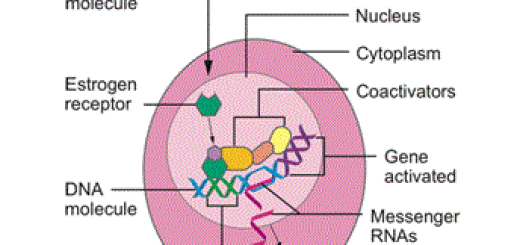Abnormal types of hemoglobin, Sickling of RBCs, Types and causes of methemoglobinemia
There are abnormal types of hemoglobin such as Sickle cell disease (HbS), Thalassemias, and Methemoglobinaemia, Sickle-shaped RBCs are fragile and easily hemolysed so anemia will occur (sickle cell anemia), The abnormal hemoglobin does not function as normal hemoglobin and has an abnormal O2 dissociation curve.
Abnormal types of hemoglobin
- Sickle cell disease (HbS)
- Thalassemias
- Methemoglobinaemia
Sickle cell disease (HbS)
The glutamic amino acid is replaced by valine amino acid at position number 6 of the beta chain due to mutation in the structured gene (α2 S2).
Pathogenesis
The presence of valine (nonpolar amino acid) instead of glutamic (polar amino acid) at position 6 of β-chain will lead to the formation of sticky patches on the surface of hemoglobins of both oxyhemoglobin S and deoxyhemoglobin S. However both the deoxyhemoglobin S and A contains complementary patches (grooves). When the blood is deoxygenated, the sticky patches of deoxyhemoglobin S bind to the complementary patches of deoxyhemoglobin S, leading to polymerization of deoxyhemoglobin S leading to the formation of long fibrous precipitates leading to sicking of RBCs.
Effects of sickling of RBCs
Sickle-shaped RBCs are fragile and easily hemolysed so anemia will occur (sickle cell anemia). Sickle-shaped RBCs are easily trapped in small blood vessels leading to thrombus formation and damage of organs like brain, bone spleen, etc.
Diagnosis
- Reticulocyte count between 10-20%.
- Sickle-shaped RBCs by microscopic examination.
- Electrophoresis. Shows HBS, no HbA. HbS moves slowly due to less negative charges on its molecules, so, it appears in paper electrophoresis nearer to the cathode than normal hemoglobin.
Thalassemias
These are hereditary hemolytic diseases in which the synthesis of either α- or β- globin chain is defective due to mutation affecting the regulatory gene.
Types of Thalassemias
- α-Thalassemias: is characterized by the decreased or absent synthesis of α- chains of hemoglobin with a compensatory increase in the synthesis of other chains. Include 2 types: Pure β- chain HbH: Where there are 4 β- chains (HbH disease). and Pure γ- chain-Hb Bart’s Where there are 4 γ- chains.
-
β-Thalassemias: Synthesis of β- chains is decreased or absent, whereas synthesis of α- chains is normal and will combine with δ- chains giving an excess of HbA2 (α2δ2) or it may combine with γ- chains producing an excess of HbF (α2γ2).
The abnormal hemoglobin does not function as normal hemoglobin and has an abnormal O2 dissociation curve.
Diagnosis
- Anemia: called Cooley’s anemia or Mediterranian sea anemia.
- Electrophoresis: shows HbF, HbH, HbA2.
Methemoglobinaemia
This is oxidized Hb, the Fe2+ normally present in heme being replaced by Fe3+. The ability to react as an O2 carrier is lost. The normal erythrocyte contains small amounts of met-Hb, formed by spontaneous oxidation of Hb. Met-Hb is normally reconverted to Hb by reducing systems in the RBC, the most important of which is NADH-methemoglobin reductase. Excess met-Hb may be present in blood because of increased production or diminished ability to convert it back to Hb.
Types and causes of methemoglobinemia
Congenital methemoglobinemia
Hemoglobin M (Hb-M): A congenital condition due to mutation in globin biosynthesis in which distal or proximal histidine is replaced by tyrosine so, heme iron is stabilized in the ferric state. Treatment with reducing agents as methylene blue is ineffective. The treatment is only conservative as a blood transfusion.
Deficiency of NADH cytochrome b5 methemoglobin reductase system: This is required for reducing heme Fe3+ back to the Fe2+ state. This system consists of NADH generated by glycolysis), a flavoprotein named cytochrome b5 reductase (also known as met Hb reductase), and cytochrome b5. Treatment with reducing agents is effective in converting met Hb back to Hb in those patients.
Acquired (toxic) methemoglobinemea
Usually arises following the ingestion of large amounts of drugs e.g. phenacetin or the sulphonamides, excess of nitrites or certain oxidizing agents present in the diet may also cause it. Treatment with the injection of reducing agents like vitamin C or glucose or methylene blue is effective in reversing acquired methemoglobinemea.
Diagnosis
- Cyanosis.
- Using a spectroscope, a dark band is found in C-line.
Blood constituents & Physical properties, Sources & functions of plasma proteins
Red blood cells (Erythrocytes) structure & function, Myeloid tissue & Bone marrow
Erythropoiesis, Hemopoiesis, Hemoglobin & Roles of red cells in oxygen transport
Hemoglobin structure, review & Types of normal hemoglobin
Heme biosynthesis & Disorder, Types of porphyrias, Fate of RBs & Catabolism of Hemoglobin



